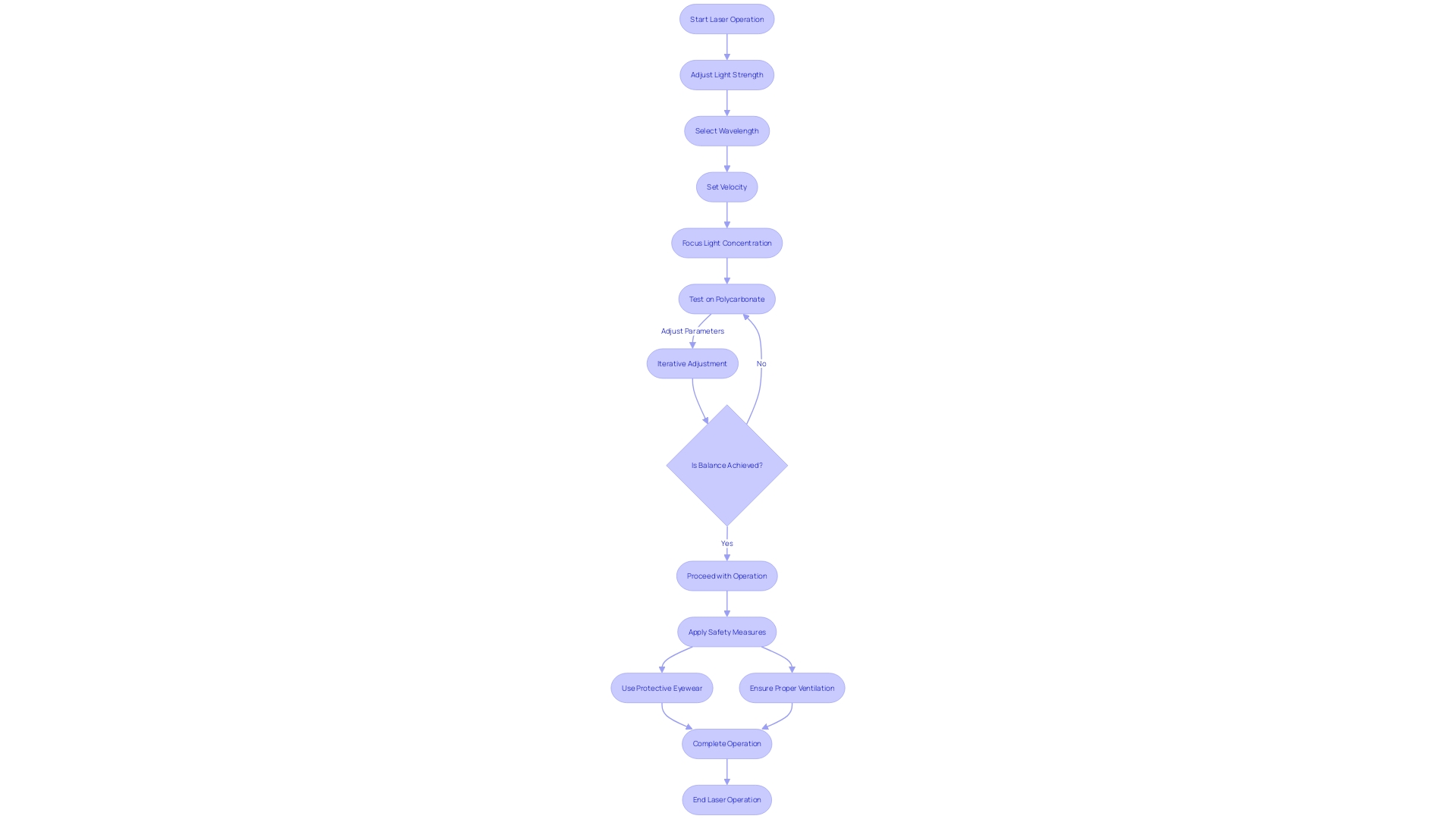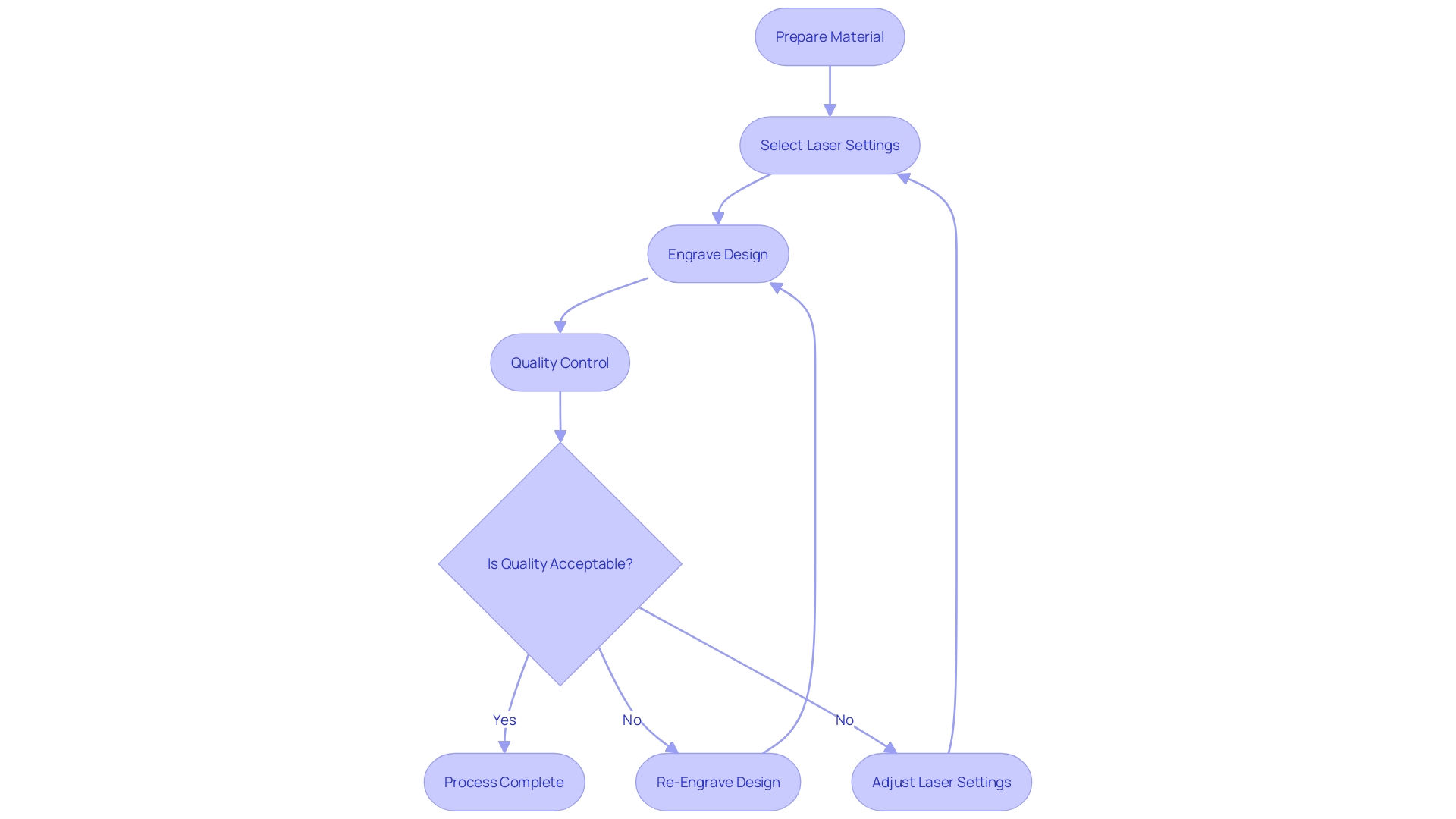Introduction
Polycarbonate is a remarkable material with properties that make it ideal for laser marking. Its high heat resistance, strong impact strength, and optical clarity are not only feats of material engineering, but they also play a crucial role in the precision and quality of laser marks. In industries such as medical, automotive, and packaging, where traceability and authentication are vital, the right laser parameters can leverage these properties to achieve distinct and permanent marks.
This article explores the technical aspects of laser marking on polycarbonate, including the choice of laser source and wattage, material preparation, optimizing laser settings, the role of assist gas and ventilation, tips for achieving high-quality marks, common challenges, and advanced techniques and applications. By delving into the intricacies of laser engraving on polycarbonate, manufacturers and brands can ensure product authenticity, safeguard brand integrity, and meet the high standards demanded by today's industries.
Properties of Polycarbonate Relevant to Laser Marking
Polycarbonate's inherent properties, such as high heat resistance, strong impact strength, and optical clarity, are not just impressive feats of material engineering; they're also pivotal for the precision and quality of marking. The capacity of a certain material to endure high temperatures enables it to withstand the intense beam of light without distorting, while its ability to resist impact ensures durability after marking. The material's clarity is especially critical for applications where visibility of the mark is paramount, such as in traceability and authentication. Veronica Savu, CEO of Morphotonix, underscores this as she discusses the integration of these features in molded products to combat the surge in counterfeit goods due to complex supply chains and raw material shortages. By choosing the appropriate parameters for the beam of light, one can utilize these characteristics to attain unique, enduring marks necessary for traceability—essential for verifying the genuineness of products in sectors such as medical, automotive, and packaging, thus protecting brand reputation and consumer well-being.
Technical Parameters for Laser Marking Polycarbonate
When setting up a marking system for polycarbonate materials, precision is paramount. The main technical parameters to consider include beam power, pulse frequency, scanning speed, and focusing distance, each playing a pivotal role in the quality and longevity of the marks. The beam power is crucial; too low and the mark is faint, too high and the material may burn. Pulse frequency affects the clarity and definition of the engraving, while scanning speed must be fine-tuned to avoid overheating. Lastly, the correct focusing distance ensures the beam of light is just the appropriate size for detailed work. To mitigate the risks of warpage, especially in large format prints, these settings must be carefully calibrated. As we've seen with advancements in engraving technologies and the precision of four-axis robotic arms, control over these parameters is essential for achieving not just aesthetic appeal but also consistent mechanical properties across the final product. Implementing ideal configurations not only enhances performance but also corresponds to the elevated expectations needed in industries such as medical equipment production, where even minor parts such as tubes and needles necessitate careful attention to specifics.
Choosing the Right Laser Source and Wattage
When it comes to marking on polycarbonate materials, choosing a suitable light source and wattage isn't just a technical decision; it's a crucial one that affects the quality and efficiency of your work. Different light sources such as fiber sources and CO2 sources each have their own specialties. Fiber-based lasers, for example, are well-known for their precise marks and long-lasting quality, which makes them appropriate for applications that demand high accuracy. Alternatively, CO2 devices are frequently preferred for their capability to generate high-contrast marks at varying depths.
Choosing the right wattage is equally crucial, as it determines the marking speed and depth. A higher wattage light beam can mark more rapidly and deeply, but it's essential to balance power with the delicate nature of polycarbonate to avoid damage to the material. Factors such as maintenance and the lifespan of the laser source are also crucial for guaranteeing continuous performance without unforeseen downtimes.
In addition, the capacity to generate intricate, accurate imprints is not only concerned with appearance; it is also related to effectiveness and adherence, particularly in sectors such as medical technology. Based on the capabilities of TruMicro Mark 1020, the technology facilitates the formation of micro-nano structures on intricate surfaces, enabling legible imprints from different perspectives—a procedure referred to as blackmarking. Such precision is critical for traceability and authentication, which are becoming increasingly important in a world where supply chain complexity is on the rise and counterfeit products pose risks to consumer safety and brand integrity.
Manufacturers and brands must now consider not only the visual result of their inscriptions but also their function in product differentiation and legal compliance. With the advanced marking techniques, companies can more easily verify the authenticity of their products, distinguishing them from illegal copies that could otherwise harm their reputation and lead to legal liabilities. This is especially relevant for industries like medical, automotive, and packaging, where safety and authenticity are paramount.
In essence, the selection of light source and wattage is about much more than the technical aspects—it's about ensuring quality, efficiency, and compliance in a market that demands nothing less.
Material Preparation and Cleaning
Ensuring that materials made of a specific type of plastic are prepared with great attention to detail is an important step in achieving high-quality markings using a specific type of light technology. It's all about starting with a clean canvas: the surface of polycarbonate must be pristine. Start by delicately removing any protective films and use comprehensive cleaning techniques to get rid of contaminants that could obstruct the path of the beam. It's not just about visual cleanliness; a dust-free environment is paramount to prevent any particulates from distorting the precision of the focused light beam.
When it comes to surface flatness, it's much like setting the stage for a flawless performance. Any irregularities can disrupt the meticulous choreography of the beam, resulting in engravings that are less than perfect. Handle these possible obstacles by making sure that the surface is as level as a serene ocean, prepared for the beam to glide over it with its accurate and effective motions.
Keep in mind, the objective is to produce symbols that are not only visually attractive but also long-lasting, similar to the methods utilized by enterprises such as Pelagus 3D, which, by means of its inventive utilization of technology, guarantees prompt and economical distribution of components. They exemplify how attention to detail in preparation can lead to operational excellence and sustainability in the long run.
As we adopt sophisticated methods such as stereolithography and engraving with high-powered light, we're reminded that the devil is in the details. Therefore, ensure that you properly prepare the environment for your transparent plastic materials, and the process of etching with a focused beam of light will execute its function perfectly, resulting in impressions that serve as evidence of your skill and meticulousness.
Optimizing Laser Settings for Polycarbonate
Discovering the ideal setup for laser operations on polycarbonate requires a nuanced procedure that relies on understanding the intricate relationship between laser parameters and the material's response. The objective is to attain a balance between speed, depth, and contrast without compromising the quality of the end result. For this purpose, test indicators are crucial; they function as an initial measure for adjusting the light's strength, wavelength, velocity, and concentration. Iterative adjustments based on these tests ensure that the markings are not only aesthetically pleasing but also durable and legible from every angle, a crucial requirement for applications in medical technology and aerospace industries. For instance, the TruMicro Mark 1020's ultra-short pulse technology exemplifies how precise control can produce micro-nano structures that appear deep black regardless of the viewing angle, a technique known as black marking. Such advancements in light technology reflect a broader trend in the industry, where yesterday's benchmarks become today's standards, and today's innovations set the stage for tomorrow's breakthroughs. As we explore the capabilities of engraving, it's imperative to remember the importance of safety measures, including protective eyewear and proper ventilation, to safeguard against the risks inherent in laser operations.

The Role of Assist Gas and Ventilation
Regarding the process of engraving on polycarbonate materials, the selection of auxiliary gases and the application of efficient air circulation systems are not just minor details; they are crucial elements that can greatly impact the result. Gases like compressed air and nitrogen are not random choices; they are purposefully selected based on their ability to enhance the quality of the marking and expedite the process. Compressed air, widely accessible and cost-effective, is often the go-to option, but nitrogen's role in achieving cleaner, more precise marks cannot be overstated, making it a favored choice for high-precision applications.
Understanding the necessity of ventilation extends beyond the immediate task at hand; it's about safeguarding the work environment and ensuring the longevity and safety of the equipment. The marking process using a beam of light can generate fumes and microscopic debris that, if not properly vented, could compromise both health and machinery. Implementing robust ventilation solutions is crucial, aligning with the overarching trend in the industry towards safer, more sustainable manufacturing practices.
In this evolving landscape, where the benchmarks of yesterday become today's starting points, technologies like the TruMicro Mark 1020 have emerged, enabling medical technology manufacturers to achieve 'blackmarking'. This technique allows for the creation of highly durable, clearly legible marks on three-dimensional surfaces, a testament to the advancements in the field and the push for innovation. This progress underscores the importance of not just keeping pace with current standards but anticipating the future demands of high-technology industries that require the utmost precision and reliability.

Tips for Achieving High-Quality Marks on Polycarbonate
To attain flawless marks on a type of plastic, one must master the technique and knowledge of engraving with focused light. Begin by creating artwork with processing in mind—this means considering how lines interact and the impact of heat on polycarbonate. Precision is key, and as the technology evolves, the use of sophisticated equipment such as a four-axis all-metal robotic arm becomes essential. This robotic arm, controlled by advanced software and stepper motors, allows for incredibly accurate engraving paths, from simple to intricate designs.
When it comes to focusing the beam of light, the correct focal length is crucial for crisp, clear marks. A recent study in Optics Express emphasizes the importance of the parameters of light amplification by stimulated emission of radiation in achieving desired outcomes. Similarly, to combat potential warping—a common issue noted by Optica Publishing Group—proper alignment and setup are vital.
Moreover, masking techniques can prevent residue from marring the surface, ensuring a professional finish. And let's not forget safety—always use protective eyewear and operate in a well-ventilated space with fire extinguishers at hand.
In the realm of high-tech manufacturing, precision is paramount. As mentioned in Optics Letters, mass production often includes intricate quality control systems, where even the width of a light beam can have a substantial impact on dimensional precision.
Lastly, the importance of product traceability and authentication cannot be overstated. Veronica Savu, CEO of Morphotonix, emphasizes that traceability and authentication safeguard against illegal copies, ensuring consumer and industry safety. Laser inscriptions can function as an anti-counterfeiting measure, a subtle yet secure method to safeguard a brand's integrity and intellectual property.
By integrating these careful methods and considerations, one can become proficient in the art of engraving on transparent thermoplastic, expanding the limits of accuracy and excellence in the production sector.
Common Challenges and Troubleshooting
Becoming proficient in the process of creating permanent inscriptions on a specific type of plastic material can be likened to finding one's way through a complex maze, where unexpected obstacles and difficulties arise. Picture this: you're aiming for that perfect mark, but instead, you're met with subpar contrast or, worse, a melted mess. But fear not! With a bit of know-how, you can turn these obstacles into mere stepping stones. For instance, Veronica Savu, CEO of Morphotonix, highlights the significance of precision in creating traceable and authentic products amidst a surge in supply-chain complexity and raw material shortages. Imagine applying this level of attentiveness to your precise engraving efforts, ensuring each polycarbonate piece isn't just labeled but etched with excellence. Moreover, when we explore the mechanics of cutting and engraving with high-powered CO2 lasers, the significance of these devices becomes evident - they are the driving force behind the accurate cuts and engravings that play a crucial role in diverse industries. By utilizing this technology, you're not only creating an indelible identity for each product that passes under the laser's scrutiny, but also crafting it. So, let's confront these challenges directly, equipped with the awareness that, in a similar way to the Swiss company Morphotonix, we can protect the integrity of our products one specific marking at a time.

Advanced Techniques and Applications
Exploring the world of polycarbonate engraving reveals a wealth of innovative methods that can transform our approach to design and security in different sectors. Take the ubiquitous RFID technology, embedded in everyday items like payment cards and access badges, as an example. This technology is continuously evolving, and the use of lasers is vital for the traceability and authentication of these items. Morphotonix CEO Veronica Savu emphasizes the importance of integrating such features to combat the rise in counterfeit components, which not only endangers consumer safety but also undermines brand integrity.
Crafting intricate designs and ensuring product authenticity has become paramount, and engraving with lasers is at the forefront of this challenge. Methods such as color indication, surface texture, and 3D carving are not only concerned with aesthetics; they are focused on developing unique, tamper-resistant characteristics that can be easily recognized by both consumers and authorities. These methods serve as a silent guardian of the brand's intellectual property and the consumer's trust. With the arrival of companies like 3M applying science to enhance lives and Morphotonix securing products across various sectors, the potential applications of these techniques for marking with lasers are vast and deeply intertwined with our daily lives.
Whether it's enhancing the visitor experience at museums or protecting medical devices with precise cuts and engravings, marking is integral to innovation. As we push the boundaries of what's possible, today's cutting-edge standards will become tomorrow's baselines, setting the stage for a future where advanced laser engraving techniques are an industry staple, safeguarding quality and authenticity in an ever-complex world.

Conclusion
In conclusion, laser marking on polycarbonate materials requires careful consideration of technical aspects to achieve high-quality and permanent marks. Polycarbonate's properties, such as heat resistance, impact strength, and optical clarity, are crucial for precise laser marks. The choice of laser source and wattage, along with optimal settings, plays a pivotal role in the quality and efficiency of the work.
Material preparation, including surface cleanliness and flatness, is essential for flawless laser engraving results. The choice of assist gases and proper ventilation are important factors that significantly influence marking quality and ensure a safe work environment.
By incorporating meticulous techniques, such as designing artwork with laser processing in mind and using masking techniques, one can achieve pristine laser marks on polycarbonate. Overcoming common challenges in laser marking requires precision and knowledge, turning obstacles into stepping stones. Advanced techniques, such as color marking, surface texturing, and 3D engraving, revolutionize design and security in various industries, providing distinctive and tamper-proof features for product authenticity.
Laser markings serve as a testament to craftsmanship and can protect against counterfeit products, ensuring consumer safety and industry trust. In the evolving industry, laser marking techniques will become an industry staple, safeguarding quality and authenticity in an ever-complex world. By delving into the intricacies of laser engraving on polycarbonate, manufacturers and brands can ensure product authenticity, safeguard brand integrity, and meet the high standards demanded by today's industries.
The art and science of laser engraving, combined with meticulous attention to detail, push the boundaries of precision and quality in the manufacturing industry.




